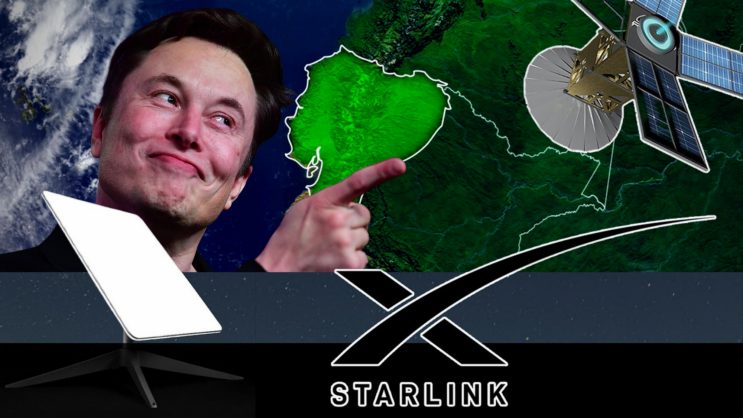On April 18th, Starlink began its official operations in Ecuador, and the Ministry of Telecommunications welcomed the company in a ceremony held in the Galapagos.
Starlink is a satellite-based internet service owned by tech magnate Elon Musk, which promises to bring high-speed internet to remote areas across the world.
The system relies on its 4,200 nanosatellites, which are interconnected by laser, to operate in the 32 countries where it provides service. These satellites orbit the Earth at a low orbit of 2,000 kilometers.
Around 15 satellites will cover the connection between Ecuador and Peru, without cables or earth stations.
With its arrival in Ecuador, Starlink will probably become a reluctant choice for people living in rural and remote areas who have struggled with slow internet speeds or a lack of availability of other service providers.
The service has its own set of advantages and disadvantages, and it is likely to become a last resort option for most people, except for those living in areas where other service options are not available.
Advantages of Starlink in Ecuador
One of the most significant advantages of Starlink is that it connects remote places, especially in the rural sector, where traditional broadband internet services are not available due to geographical conditions.
In Ecuador, there are many remote communities located in the Andes mountains and the Amazon rainforest that have never had access to high-speed internet. Starlink’s satellite-based internet service offers a solution to this problem by providing a reliable internet connection to these communities.
Another advantage of Starlink is its ease of installation. The Starlink service kit includes a small antenna that can be installed on the roof of a house, an electrical regulator, and a router, like those offered by cable or fiber optic operators.
This ‘ease’ to connect the antenna and install the service is one of the benefits of the system. Additionally, the satellite internet service can be set up without the need for cables or earth stations, which makes it easy to install in remote areas where traditional internet service providers cannot reach.
Starlink’s satellite-based internet service also offers significant benefits in conflict situations, as demonstrated in Ukraine, where it has been used in the aftermath of the Russian invasion in February 2023.
In times of conflict or natural disasters, traditional internet infrastructure is often destroyed, making it challenging to provide critical services such as communication and information access. Starlink’s satellite-based internet service can help provide essential communication and information services in such situations.
Disadvantages of Starlink in Ecuador
Despite the obvious advantages of Starlink, there are also several disadvantages. Without question, the most significant disadvantage of Starlink in Ecuador is its cost.
Compared to other broadband internet services in Ecuador (that provide reliable and fast fiber optic services for as little as $30 per month), Starlink is expensive, with a starting price of $60 per month.
Additionally, the cost of the equipment/installation kit is $355, plus shipping. This cost is excessive compared to other broadband internet services, especially since many do not charge for equipment or an antenna.
Another disadvantage of Starlink is its speed. According to the Ministry of Telecommunications, Starlink’s data download speed is 100 megabits per second (Mbps), and the upload speed is 40, on average; in contrast the official Starlink website boasts of 300 megabits per second service.
However, a test carried out by the Tom’s Guide site (a website dedicated to reviewing new technologies) indicated that the maximum download speed does not exceed 87 megabits per second. While the upload speed, for example, to upload videos or photos to the Cloud, is on average 15 to 10 megabits per second.
This can be a significant drawback for people who need high-speed internet, such as gamers, those who telework, or those who love binge-watching a series on Netflix.
Latency is another important factor to consider when evaluating Starlink’s performance.
Latency measures the delay in the arrival of a packet at the destination and is measured in units of time, such as milliseconds.
With Starlink, it takes 27 to 41 milliseconds for a data packet to arrive.
Also, according to Ookla, the most frequently used internet speed testing site, Starlink had shown signs of slowing down since its initial launch, recording a drop in median download speed between 9-54% from the second quarter of 2021 to the second quarter of 2022.
“Starlink speeds decreased in every country we surveyed over the past year as more users sign up for service,” Ookla said. It looked at Starlink performance in Europe, Oceania, North America and South America, including eight additional countries and “expanded data” compared to its previous looks at satellite internet providers’ services.
Although these are not terrible results, they are poor technical aspects for a connection in the city, where many devices are connected at the same time, streaming videos are viewed, and Zoom conferences are held.
For this reason, Starlink is not a service for cities or high-density areas.


0 Comments